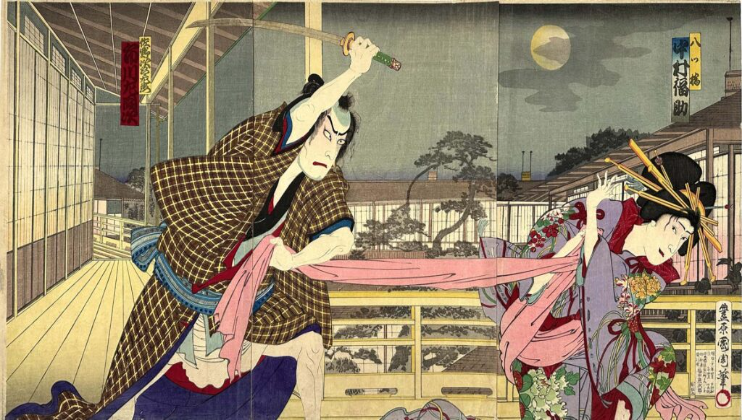Eyewitness
The Sainsbury Centre presents Eyewitness, examining cross-cultural relationships with the dramatisation of killing.

The Sainsbury Centre presents Eyewitness, a new exhibition asking why people across the world are so fascinated by the dramatisation of killing. From the bickering violence of Punch and Judy shows to paintings which revisit the tragedies of Shakespeare’s Othello and Hamlet, and from shadow puppets enacting Hindu epic poems to a contemporary appropriation of Alfred Hitchcock's seminal thriller, Psycho (1960), the staging and re-staging of violence in art raises questions about our society and its viewing habits, as well as cultural constructions of virtue, justice, and vengeance.
Part of the Sainsbury Centre’s Can We Stop Killing Each Other? season of exhibitions, Eyewitness pairs historical artefacts and artworks with contemporary works to explore depictions of extreme violence on stage, on screen and in art, reflecting a society fascinated with the dramatisation of homicide. From hand-operated glove puppets, to large productions that coordinate stage, music, lighting, costumes and props, the exhibition showcases the material culture of performances all over the world to encourage reflection on how people establish their frameworks of justice and ethics.
The spectacle of violence is central to visual art and performance traditions across the world, and drama – now and in the past – provides a powerful device for communicating the dynamics of human agency, manipulation and control.
On display in Eyewitness are a range of historical glove, string and shadow-puppets. These include large and semi-translucent tholu bommalata puppets from southern India and Punch and Judy glove puppets – used in performances descended from the Italian tradition of Comedia Dell’arte – highlight the petty injustices, mean jokes and escalating violent interactions of puppet shows enjoyed by generations of British children. The exhibition also includes a collection of theatre woodcuts, depicting actors in well-liked Kabuki plays, (a classical form of Japanese theatre which mixes dramatic performance with traditional dance). Capturing dramatic poses, costumes and makeup, they served as souvenirs and a marketing tool for theatres, allowing audiences to connect with their favourite performers and plays.
The exhibition includes a wide range of prints and paintings representing dramatic narratives in some of the most widely read British literature and playwriting, from Charles Dickens’ Oliver Twist, which exposes the cruel treatment of the poor in Victorian England, to oil paintings depicting tragic scenes from Shakespeare’s Hamlet and Othello.
Eyewitness also traces the dramatic treatment of homicide to the present day through a presentation of contemporary video works which appropriate Hollywood films to comment on violence and voyeurism within modern society. Christian Marclay’s Crossfire (2007) and Douglas Gordon’s 24-hour Psycho (1993) confront audiences with violent imagery from popular culture to make us question our societal values
Jago Cooper, Director of the Sainsbury Centre, said: “Can art help us stop killing each other? This show explores cross-cultural obsessions with watching violence from around the world and throughout time. In doing so it questions whether this portrayal of violence encourages it in real life or conversely helps people decide what is right and wrong – and what rules we should be in place to stop people killing each other in the future.”
Venue details
- Address:
- Sainsbury Centre
- Norwich